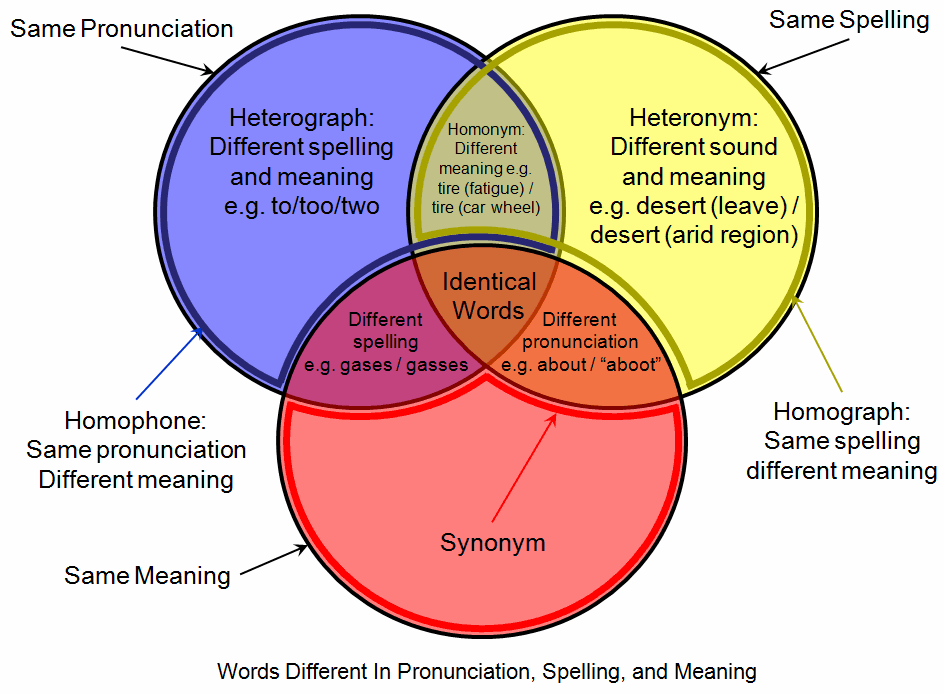|
Jamaican English
Jamaican English, including Jamaican Standard English, is the variety of English native to Jamaica and is the official language of the country. A distinction exists between Jamaican English and Jamaican Patois (a creole language), though not entirely a sharp distinction so much as a gradual continuum between two extremes. Jamaican English tends to follow British English spelling conventions. Sociolinguistics There are several language varieties that have significantly impacted the Jamaican dialect of English. English was introduced into Jamaica in 1655, because of British colonisation. British English was spread through post-primary education, and through British teachers that immigrated to Jamaica. Standard English in Jamaica conflated with the British standard. Individuals who speak the standard variety are often considered to be of a higher social class; the people who speak more standard English than patois are known as “uptown” Also, American English Amer ... [...More Info...] [...Related Items...] OR: [Wikipedia] [Google] [Baidu] |
Jamaica
Jamaica is an island country in the Caribbean Sea and the West Indies. At , it is the third-largest island—after Cuba and Hispaniola—of the Greater Antilles and the Caribbean. Jamaica lies about south of Cuba, west of Hispaniola (the island containing Haiti and the Dominican Republic), and southeast of the Cayman Islands (a British Overseas Territories, British Overseas Territory). With million people, Jamaica is the third most populous English-speaking world, Anglophone country in the Americas and the fourth most populous country in the Caribbean. Kingston, Jamaica, Kingston is the country's capital and largest city. The indigenous Taíno peoples of the island gradually came under Spanish Empire, Spanish rule after the arrival of Christopher Columbus in 1494. Many of the indigenous people either were killed or died of diseases, after which the Spanish brought large numbers of Africans to Jamaica as slaves. The island remained a possession of Spain, under the name Colo ... [...More Info...] [...Related Items...] OR: [Wikipedia] [Google] [Baidu] |
Homophones
A homophone () is a word that is pronounced the same as another word but differs in meaning or in spelling. The two words may be spelled the same, for example ''rose'' (flower) and ''rose'' (past tense of "rise"), or spelled differently, as in ''rain'', ''reign'', and ''rein''. The term ''homophone'' sometimes applies to units longer or shorter than words, for example a phrase, letter, or groups of letters which are pronounced the same as a counterpart. Any unit with this property is said to be ''homophonous'' (). Homophones that are spelled the same are both homographs and homonyms. For example, the word ''read'', in "He is well ''read''" and in "Yesterday, I ''read'' that book". Homophones that are spelled differently are also called heterographs, e.g. ''to'', ''too'', and ''two''. Wordplay and games Homophones are often used to create puns and to deceive the reader (as in crossword puzzles) or to suggest multiple meanings. The last usage is common in poetry and creati ... [...More Info...] [...Related Items...] OR: [Wikipedia] [Google] [Baidu] |
High Culture
In a society, high culture encompasses culture, cultural objects of Objet d'art, aesthetic value that a society collectively esteems as exemplary works of art, as well as the literature, music, history, and philosophy a society considers representative of its culture. In popular usage, the term ''high culture'' identifies the culture either of the upper class (an Aristocracy (class), aristocracy) or of a status class (the intelligentsia); "high culture" also identifies a society's common repository of broad-range knowledge and tradition (folk culture) that transcends its social-class system. Sociologically, the term is contrasted with "low culture", which comprises the forms of popular culture characteristic of the less-educated social classes, such as the barbarians, the Philistinism, philistines, and ''hoi polloi'' (the masses), though the upper classes very often also enjoy low culture. Matthew Arnold introduced the term "high culture" in his 1869 book ''Culture and Anarchy'' ... [...More Info...] [...Related Items...] OR: [Wikipedia] [Google] [Baidu] |
Post-creole Speech Continuum
A post-creole continuum (or simply creole continuum) is a dialect continuum of varieties of a creole language between those most and least similar to the superstrate language (that is, a closely related language whose speakers assert or asserted dominance of some sort). Due to social, political, and economic factors, a creole language can decreolize towards one of the languages from which it is descended, aligning its morphology, phonology, and syntax to the local standard of the dominant language but to different degrees depending on a speaker's status. Stratification William Stewart, in 1965, proposed the terms acrolect, the highest or most prestigious variety on the continuum, and basilect, the lowest or least prestigious variety, as sociolinguistic labels for the upper and lower boundaries, respectively, of a post-creole speech continuum. In the early 1970s Derek Bickerton popularized these terms (as well as mesolect for intermediate points in the continuum) to refer to t ... [...More Info...] [...Related Items...] OR: [Wikipedia] [Google] [Baidu] |
Stress (linguistics)
In linguistics, and particularly phonology, stress or accent is the relative emphasis or prominence given to a certain syllable in a word or to a certain word in a phrase or Sentence (linguistics), sentence. That emphasis is typically caused by such properties as increased loudness and vowel length, full articulation of the vowel, and changes in Tone (linguistics), tone. The terms ''stress'' and ''accent'' are often used synonymously in that context but are sometimes distinguished. For example, when emphasis is produced through pitch alone, it is called ''Pitch-accent language, pitch accent'', and when produced through length alone, it is called ''quantitative accent''. When caused by a combination of various intensified properties, it is called ''stress accent'' or ''dynamic accent''; English uses what is called ''variable stress accent''. Since stress can be realised through a wide range of Phonetics, phonetic properties, such as loudness, vowel length, and pitch (which are ... [...More Info...] [...Related Items...] OR: [Wikipedia] [Google] [Baidu] |
Caribbean English
Caribbean English (CE, CarE) is a set of dialects of the English language which are spoken in the Caribbean and most countries on the Caribbean coasts of Central America and South America. Caribbean English is influenced by, but is distinct to the English-based creole languages spoken in the region. Though dialects of Caribbean English vary structurally and phonetically across the region, all are primarily derived from British English, Indigenous languages and West African languages. In some countries with a plurality Indian population, such as Trinidad and Tobago and Guyana, Caribbean English has further been influenced by Hindustani and other South Asian languages. Overview * The daily-used English in the Caribbean has a different set of pronouns, typically ''me, meh'' or ''mi'', ''you, yuh, he, she, it, we, wi'' or ''alawe, wunna'' or ''unu'', and ''dem'' or ''day''. Central Americans use ''I, mi, my, he, she, ih, it, we, wi'' or ''alawe'', ''allayu'' or ''unu'', and ... [...More Info...] [...Related Items...] OR: [Wikipedia] [Google] [Baidu] |
Th-stopping
''Th''-stopping is the realization of the dental fricatives as stops—either dental or alveolar—which occurs in several dialects of English. In some accents, such as of Indian English and middle- or upper-class Irish English, they are realized as the dental stops and as such do not merge with the alveolar stops ; thus, for example, ''tin'' ( in Ireland and in India) is not a homophone of ''thin'' . In other accents, such as varieties of Caribbean English, Nigerian English, Liberian English, and older, rural, or working-class Irish English, such pairs are indeed merged. Variation between both dental and alveolar forms exists in much of the working-class English speech of North America and sometimes southern England. It is also common for babies and toddlers, who are still learning to talk and/or haven't fully grown their front teeth capable of producing the ''th'' sound. ''Th''-stopping occurred in all continental Germanic languages, resulting in cognates such ... [...More Info...] [...Related Items...] OR: [Wikipedia] [Google] [Baidu] |
Line-loin Merger
English diphthongs have undergone many changes since the Old and Middle English periods. The sound changes discussed here involved at least one phoneme which historically was a diphthong. Old English Old English diphthongs could be short or long. Both kinds arose from sound changes occurring in Old English itself, although the long forms sometimes also developed from Proto-Germanic diphthongs. They were mostly of the height-harmonic type (both elements at the same height) with the second element further back than the first. The set of diphthongs that occurred depended on dialect (and their exact pronunciation is in any case uncertain). Typical diphthongs are considered to have been as follows: * high, fully backing, , spelt (found in Anglian dialects, but merged into in Late West Saxon) * high, narrower, possibly , spelt (found in Late West Saxon) * mid, , spelt * low, , spelt As with monophthongs, the length of the diphthongs was not indicated in spelling, but in modern ... [...More Info...] [...Related Items...] OR: [Wikipedia] [Google] [Baidu] |
Phoneme
A phoneme () is any set of similar Phone (phonetics), speech sounds that are perceptually regarded by the speakers of a language as a single basic sound—a smallest possible Phonetics, phonetic unit—that helps distinguish one word from another. All languages contain phonemes (or the spatial-gestural equivalent in sign languages), and all spoken languages include both consonant and vowel phonemes; phonemes are primarily studied under the branch of linguistics known as phonology. Examples and notation The English words ''cell'' and ''set'' have the exact same sequence of sounds, except for being different in their final consonant sounds: thus, versus in the International Phonetic Alphabet (IPA), a writing system that can be used to represent phonemes. Since and alone distinguish certain words from others, they are each examples of phonemes of the English language. Specifically they are consonant phonemes, along with , while is a vowel phoneme. The spelling of Engli ... [...More Info...] [...Related Items...] OR: [Wikipedia] [Google] [Baidu] |
Palatalization (phonetics)
In phonetics, palatalization (, ) or palatization is a way of pronouncing a consonant in which part of the tongue is moved close to the hard palate. Consonants pronounced this way are said to be palatalized and are transcribed in the International Phonetic Alphabet by affixing a superscript ''j'' ⟨ʲ⟩ to the base consonant. Palatalization is not Phonemic contrast, phonemic in English, but it is in Slavic languages such as Russian language, Russian and Ukrainian language, Ukrainian, Finnic languages such as Estonian language, Estonian, Karelian language, Karelian, and Võro language, Võro, and other languages such as Irish language, Irish, Marshallese language, Marshallese, Kashmiri language, Kashmiri, and Japanese language, Japanese. Types In technical terms, palatalization refers to the secondary articulation of consonants by which the body of the tongue is raised toward the hard palate and the alveolar ridge during the articulation of the consonant. Such consonants are phon ... [...More Info...] [...Related Items...] OR: [Wikipedia] [Google] [Baidu] |
Velar Consonant
Velar consonants are consonants articulated with the back part of the tongue (the dorsum) against the soft palate, the back part of the roof of the mouth (also known as the "velum"). Since the velar region of the roof of the mouth is relatively extensive and the movements of the dorsum are not very precise, velars easily undergo assimilation, shifting their articulation back or to the front depending on the quality of adjacent vowels. They often become automatically ''fronted'', that is partly or completely palatal before a following front vowel, and ''retracted'', that is partly or completely uvular before back vowels. Palatalised velars (like English in ''keen'' or ''cube'') are sometimes referred to as palatovelars. Many languages also have labialized velars, such as , in which the articulation is accompanied by rounding of the lips. There are also labial–velar consonants, which are doubly articulated at the velum and at the lips, such as . This distinction disappea ... [...More Info...] [...Related Items...] OR: [Wikipedia] [Google] [Baidu] |

